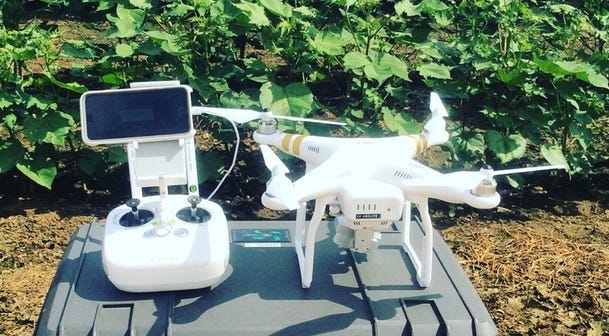![Mario Werth flew this drone over Shannon Nixon's cotton field to assess the amount of damage caused by high winds blowing weed killer onto the crop. [CONTRIBUTED PHOTO]](http://127.0.0.1/wordpress/wp-content/uploads/2022/01/ghows-DA-8fb0bb31-54f3-6be6-e053-0100007fe457-6512fc29.jpeg)
BAKER — When most people think of farming, they don’t often think of it being affected by technology, but for Baker farmer Shannon Nixon that’s not the case.
Recently, Nixon sprayed a weed killer on his peanut field, not thinking of the possible damage it could do to his cotton field sitting adjacent to it. However, a strong wind came through and blew the weed killer onto the cotton field.
As Nixon walked through his cotton field, he could see the first two rows were damaged, but was not sure of the extent of the damage until Mario Werth brought in a drone to fly over the field.
“Sometimes with the naked eye, you can’t really see how far it goes,” Nixon said. “(Werth) was able to tell me how much herbicide entry I had.”
The drone used a normalized difference vegetation index (NDVI) to show that the damage had covered about 5 acres of the cotton field.
Werth, owner of Advanced Aerial Operations, said plants will absorb visual light while bouncing back infrared light.
“If you get a lot of infrared light back, but you don’t get a lot of visual light back, that plant is healthy,” Werth said. “If the plant didn’t absorb the visual light, it is not producing photosynthesis, so it’s dying.”
Nixon said once the damage was done, there was nothing he could do about it. However, the whole experience made him more aware for the need of technology in agriculture.
“The big thing with farming is that technology has outpaced our abilities. There’s technology available to us that we’re still trying to figure out how to integrate,” Nixon said. “Technology facilitates our efficiency, but it also facilitates our stewardship to the environment.”

This article originally appeared on Crestview News Bulletin: Technology helping agriculture to grow
